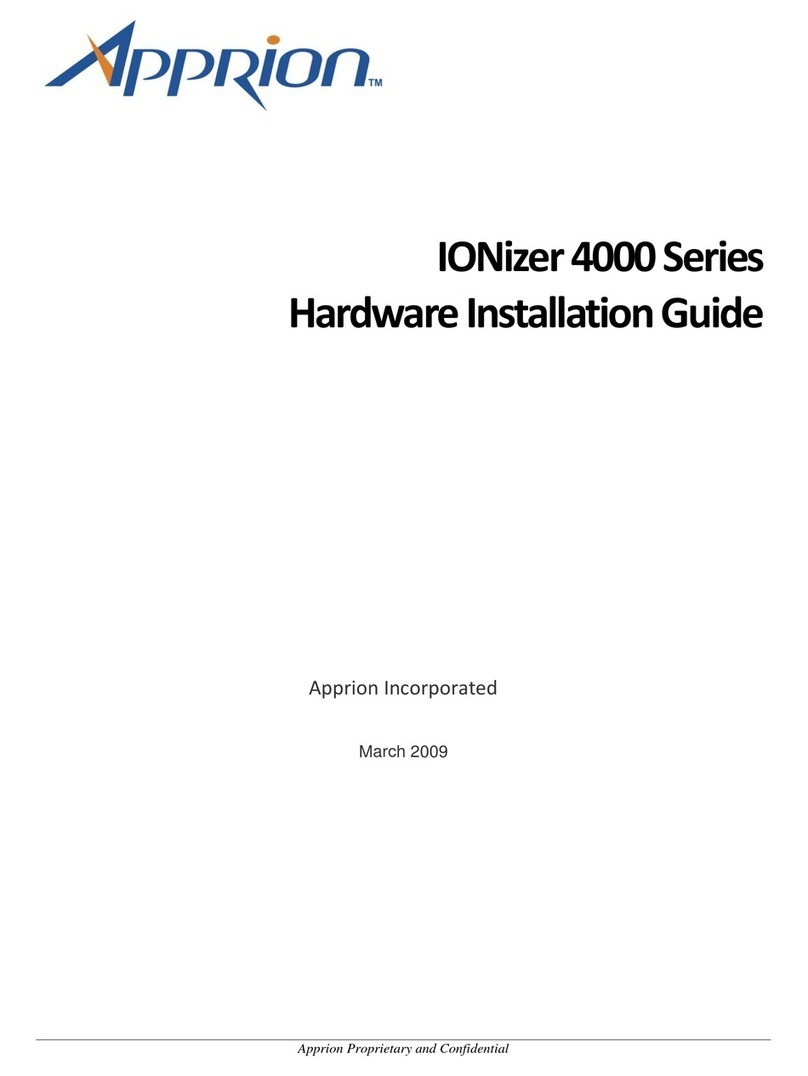
Apprion Proprietary & Confidential
Table of Contents
Revision History............................................................................................................................................................ii
Audience........................................................................................................................................................................v
Conventions...................................................................................................................................................................v
How to Use this Guide ................................................................................................................................................xv
CHAPTER 1 IONIZER DEVICE OVERVIEW ......................................................................................................1
Introduction ...................................................................................................................................................................1
IONizer 4200 Series Models .........................................................................................................................................1
Safety Information.........................................................................................................................................................1
Compliance....................................................................................................................................................................3
CHAPTER 2 INSTALLATION PREPARATION...................................................................................................5
Overview .......................................................................................................................................................................5
Preparation.....................................................................................................................................................................5
Packaging Content....................................................................................................................................................5
4200 Series............................................................................................................................................................................. 5
CHAPTER 3 INSTALLATION GUIDELINES.......................................................................................................7
Overview .......................................................................................................................................................................7
Basic Guidelines............................................................................................................................................................7
CHAPTER 4 MOUNTING METHODS ...................................................................................................................9
Overview .......................................................................................................................................................................9
Pole Mounting...............................................................................................................................................................9
4200 Series ...............................................................................................................................................................9
Requirements ......................................................................................................................................................................... 9
Mounting Diagram............................................................................................................................................................... 10
Wall Mounting ............................................................................................................................................................10
4200 Series .............................................................................................................................................................10
Requirements ....................................................................................................................................................................... 10
Procedure ............................................................................................................................................................................. 10
Sealing Antenna Connections......................................................................................................................................12
CHAPTER 5 GROUNDING AND CABLING THE IONIZER ...........................................................................13
Overview .....................................................................................................................................................................13
Grounding....................................................................................................................................................................13
Grounding Procedures (IONizer 4200, 4220) ........................................................................................................13
IONizer 4200...............................................................................................................................................................15
Using 48V PoE from an iKIT.................................................................................................................................16
Using 24 VDC from an iKIT................................................................................................................................................ 18
IONizer 4220...............................................................................................................................................................18
APPENDIX A APPROVED ANTENNAS ..............................................................................................................19
Basic Antenna Installation Information.......................................................................................................................19
Sealing Antenna Connections.................................................................................................................................19
Approved Antennas.....................................................................................................................................................20
Omni-Directional Antennas....................................................................................................................................20
Polarized Antennas.................................................................................................................................................26




























